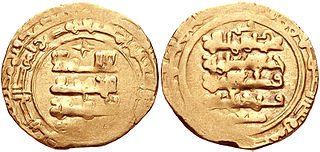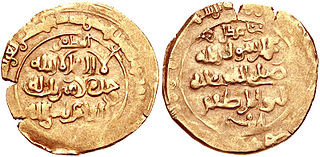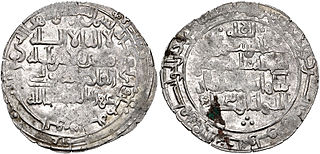 W
WAbu Kalijar Marzuban was the Buyid amir of Fars (1024–1048), Kerman (1028–1048) and Iraq (1044–1048). He was the eldest son of Sultan al-Dawla.
 W
WAbu'l-Aswar or Abu'l-Asvar Shavur ibn Fadl ibn Muhammad ibn Shaddad was a member of the Shaddadid dynasty. Between 1049 and 1067 he was the eighth Shaddadid ruler of Arran from Ganja. Prior to that, he ruled the city of Dvin from 1022 as an autonomous lord. A capable warrior, and a wise and cunning ruler, Abu'l-Aswar was engaged in several conflicts with most of his neighbours. During his rule over Dvin, he was mostly involved in the affairs of the Armenian principalities. He collaborated with the Byzantine Empire in its conquest of the last remnants of Bagratid Armenia in 1045, but when the Byzantines later turned on him, he survived three successive offensives that sought to take Ganja. In 1049, a revolt in Ganja overthrew his infant great-great-nephew, Anurshirvan. The rebels invited him to take up the family's emirate, and he moved from Dvin to Ganja. Under his rule, the Shaddadid dynasty reached its zenith. He undertook successful campaigns into Georgia and Shirvan, although the limits of Shaddadid power were exposed by his failure to take over the Emirate of Tiflis and by devastating raids by the Alans. At the same time, his reign witnessed the rapid rise of the Seljuk Empire and the extension of its control over the Transcaucasian principalities. Abu'l-Aswar became a Seljuk vassal in 1054/5. Although he gained control over the former Armenian capital of Ani through Seljuk patronage in 1065, this association also paved the way for the dynasty's decline after his death in November 1067.
 W
WAbu Nasr Khusrau Firuz, better known by his laqab of Al-Malik al-Rahim was the last Buyid amir of Iraq. He was the son of Abu Kalijar.
 W
WAli ibn Hasan, also known as Harun Bughra Khan and better known as Ali-Tegin was a Karakhanid ruler in Transoxiana from 1020 to 1034 with a brief interruption in 1024/5.
 W
WAbu Nasr Firuz Kharshadh, better known by his laqab of Baha al-Dawla was the Buyid amir of Iraq (988–1012), along with Fars and Kerman (998–1012). His early reign was dominated by struggles with his rival relatives over control of the western Persian provinces, but by 998 he managed to establish his supremacy over the Buyid confederation. His reign nevertheless saw the increasing encroachment of neighbouring powers on Buyid territory, and marks the beginning of the decline of the Buyids' power. He was the third son of 'Adud al-Dawla.
 W
WDanishmend Gazi, full name Danişmend Gümüştegin Ahmed Ibn Ali Taylu et-Türkmanī, Danishmend Taylu, or Dānishmand Aḥmad Ghāzī, was the founder of the beylik of Danishmends. After the Turkish advance into Anatolia that followed the Battle of Manzikert, his dynasty controlled the north-central regions in Anatolia.
 W
WAmir Abu'l-Abbas Fadl, better known as Fadluya, was an Iranian tribal chieftain of the Shabankara in Fars. He was the son of Ali ibn Hasan ibn Ayyub of the Ramani clan of the Shabankara, and was the founder of the Shabankara dynasty in Fars, which lasted sporadically from 1030 to 1355. The Shabankaras occupied the mountain region of Kuhgiluya and maintained a great scale of independence.
 W
WFariburz ibn Sallar, better simply known as Fariburz I (فریبرز), was the sixteenth Shah of Shirvan, ruling from 1063 to 1096. His reign saw many major political balance changes in Caucasus, including expansion by the Seljuqs. He was considered a ruler with great diplomatic skills, and his kingdom extended from Mughan to Kumuk and Alania.
 W
WFarrukh-Zad, was sultan of the Ghaznavid Empire from ca. 1053 to 4 April 1059. His reign was considered one of benevolence, prosperity and tranquility for the Ghaznavid empire. It was free of the chaotic turbulence and greed from palace ghulams until the end of his reign. He was very devout Muslim and fasted during Rajab, Sha'ban and Ramadan.
 W
WShahāb-ud-Dawla Mawdūd, known as Mawdud of Ghazni, was a sultan of the Ghaznavids from 1041-50. He seized the throne of the sultanate from his uncle, Muhammad of Ghazni, in revenge for the murder of his father, Mas'ud I of Ghazni. His brother Majdud in Lahore did not recognize him as sultan, but his sudden death paved the way for Mawdud to exercise control over the eastern portion of the Ghaznavid Empire.
 W
WMuhammad of Ghazni was sultan of the Ghaznavid Empire briefly in 1030, and then later from 1040 to 1041. He ascended the throne upon the death of his father Mahmud in 1030. He was the younger of a set of twins; this circumstance resulted in civil strife. His reign lasted five months before he was overthrown by his twin Ma'sud I, after which he was blinded and imprisoned. Nine years later he was reinstated for a year before being slain by his nephew Maw'dud. According to Ferishta, his reign lasted only 50 days before he was blinded and imprisoned on the order of Ma'sud I. A year later he was executed by his nephew Maw'dud after losing a battle in Nangrahar.
 W
WIbrahim of Ghazna (1033–1099), was sultan of the Ghaznavid empire from April 1059 until his death in 1099. Having been imprisoned at the fortress of Barghund, he was one of the Ghaznavid princes that escaped the usurper Toghrul's massacre in 1052. After his brother Farrukh-Zad took power, Ibrahim was sent to the fortress of Nay, the same fortress where the poet Masud Sa'd Salman would later be imprisoned for ten years.
 W
WKerbogha was Atabeg of Mosul during the First Crusade and was renowned as a soldier.
 W
WAbu Ahmad Wali 'l-Dawla Khalaf ibn Ahmad was the Saffarid amir of Sistan from 963 until 1002. Although he was renowned in the eastern Islamic world as a scholar, his reign was characterized by violence and instability, and Saffarid rule over Sistan came to an end with his deposition.
 W
WMahmud of Ghazni was the first independent ruler of the Turkic dynasty of Ghaznavids, ruling from 999 to 1030. At the time of his death, his kingdom had been transformed into an extensive military empire, which extended from northwestern Iran proper to the Punjab in the Indian subcontinent, Khwarazm in Transoxiana, and Makran.
 W
WAbu Taleb Rostam, known as Majd al-Dawla, was the Buyid emir of Rayy, a city in Iran (997–1029). He was the eldest son of Fakhr al-Dawla. His reign saw the removal of the Buyids as a power in central Iran.
 W
WManuchihr ibn Shavur was a Shaddadid emir of Ani from c. 1072 to 1118, the first of the dynasty to rule this key city, formerly an Armenian royal capital.
 W
WMasʽud I of Ghazni, known as Amīr-i Shahīd, was sultan of the Ghaznavid Empire from 1030 to 1040. He rose to power by seizing the Ghaznavid throne from his younger twin Mohammad, who had been nominated as the heir upon the death of their father Mahmud of Ghazni. His twin was shortly blinded and imprisoned. However, when much of Masʽud's western domains had been wrested from his control, his troops rebelled against him and reinstated Mohammad to the throne.
 W
WMuhammad ibn Suri was the king of the Ghurid dynasty from the 10th-century to 1011. During his reign, he was defeated by the Ghaznavid emperor Mahmud of Ghazni and his domains were conquered. According to Minhaj-us-Siraj, Muhammad was captured by Mahmud of Ghazni, made prisoner along with his son, and taken to Ghazni, where Muhammad died by poisoning himself. Subsequently, the whole population of Ghuristan was taught the precepts of Islam and converted from Mahayana Buddhism to Islam. Mu'izz ad-Din Muhammad of Ghor later overthrew the Ghaznavid Empire in 1186 and conquered their last capital at Lahore.It is said that Muhammad was a great king and most of the territories of Ghor were in his possession. But as many of the inhabitants of Ghor of High and low degree had not yet embraced Islam, there was constant strife among them. The Saffarids came from Nimruz to Bust and Dawar, Ya'qub al-Saffar overpowered Lak-Lak, who was the chief of Takinabad, in the country of Rukhaj. The Ghorians sought the safety in Sara-sang and dwelt there in security but even among them hostilities constantly prevailed between the Muslims and the infidels. One castle was at war with another castle, and their feuds were unceasing; but owing to the inaccessibility of the mountains of Rasiat, which are in Ghor no foreigner was able to overcome them, and Muhammad was the head of all the Mandeshis.
 W
WAbu Taher was the Buyid ruler of Hamadan from 997 to 1021. He was the son of Fakhr al-Dawla.
 W
WAbu Shuja, better known by his laqab of Sultan al-Dawla, was the Buyid amir of Fars (1012–1024) and Iraq (1012–1021). He was the son of Baha' al-Dawla.
 W
WYazid ibn Ahmad or Yazid II was the tenth independent Shah of Shirvan.